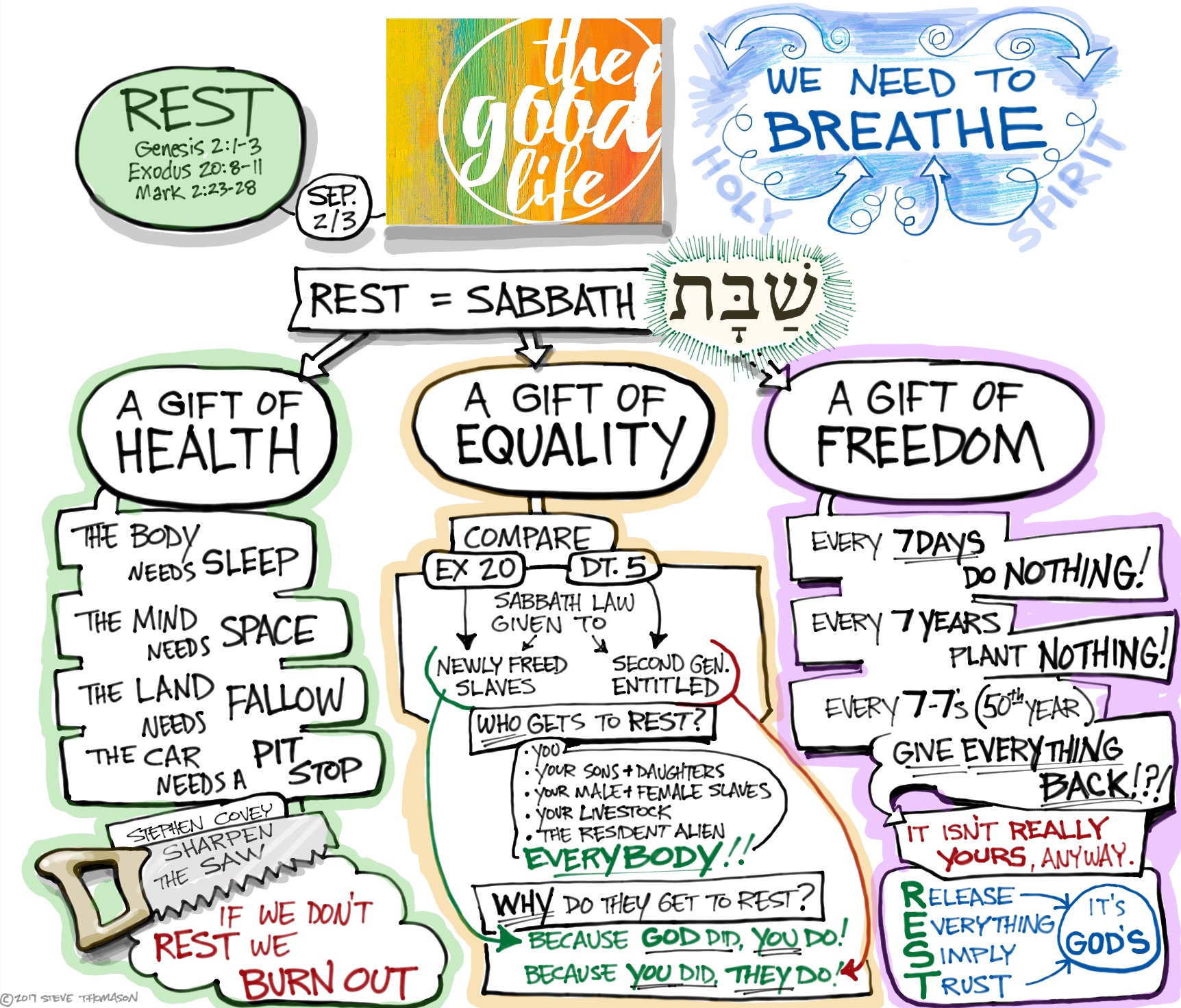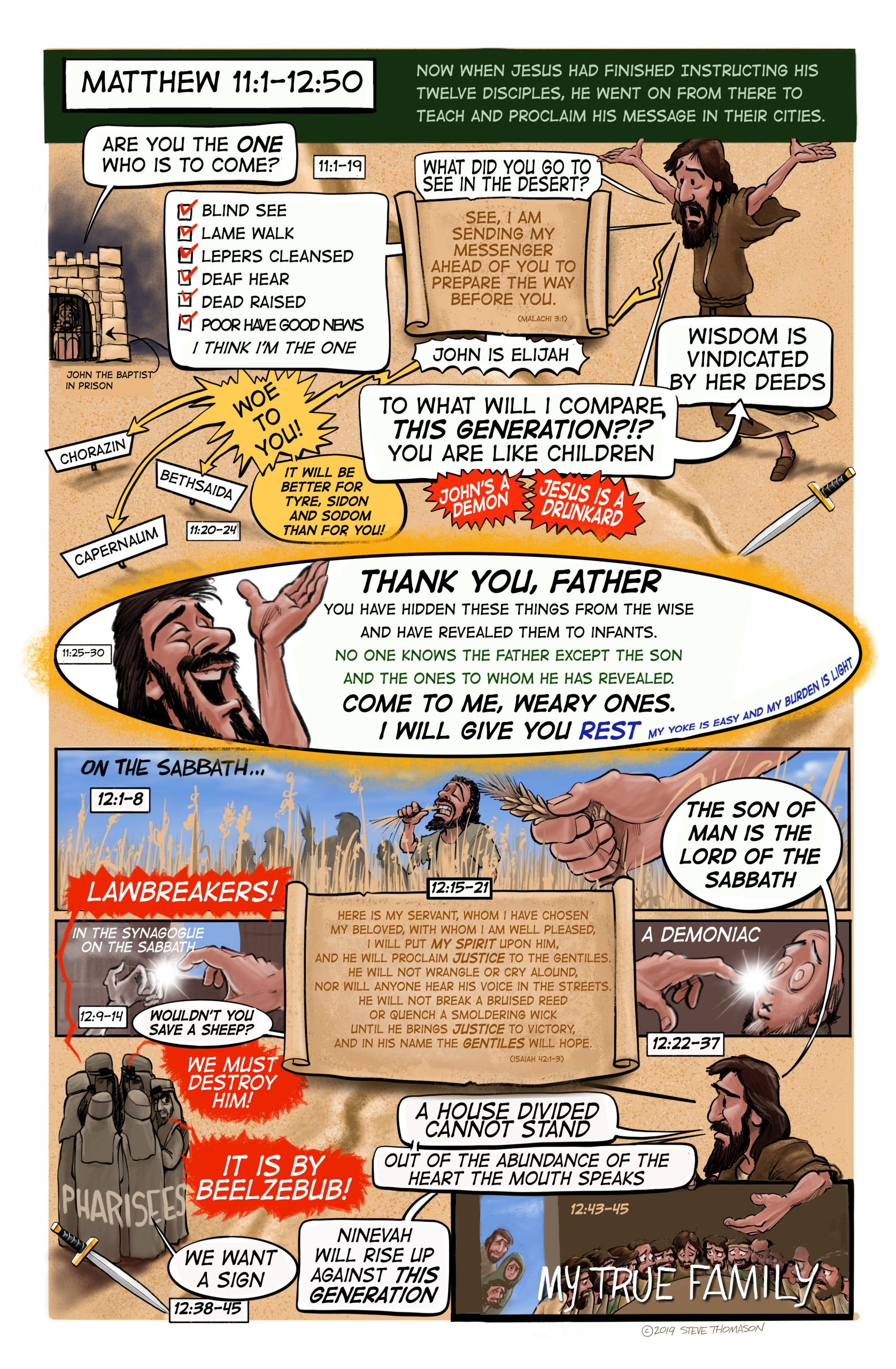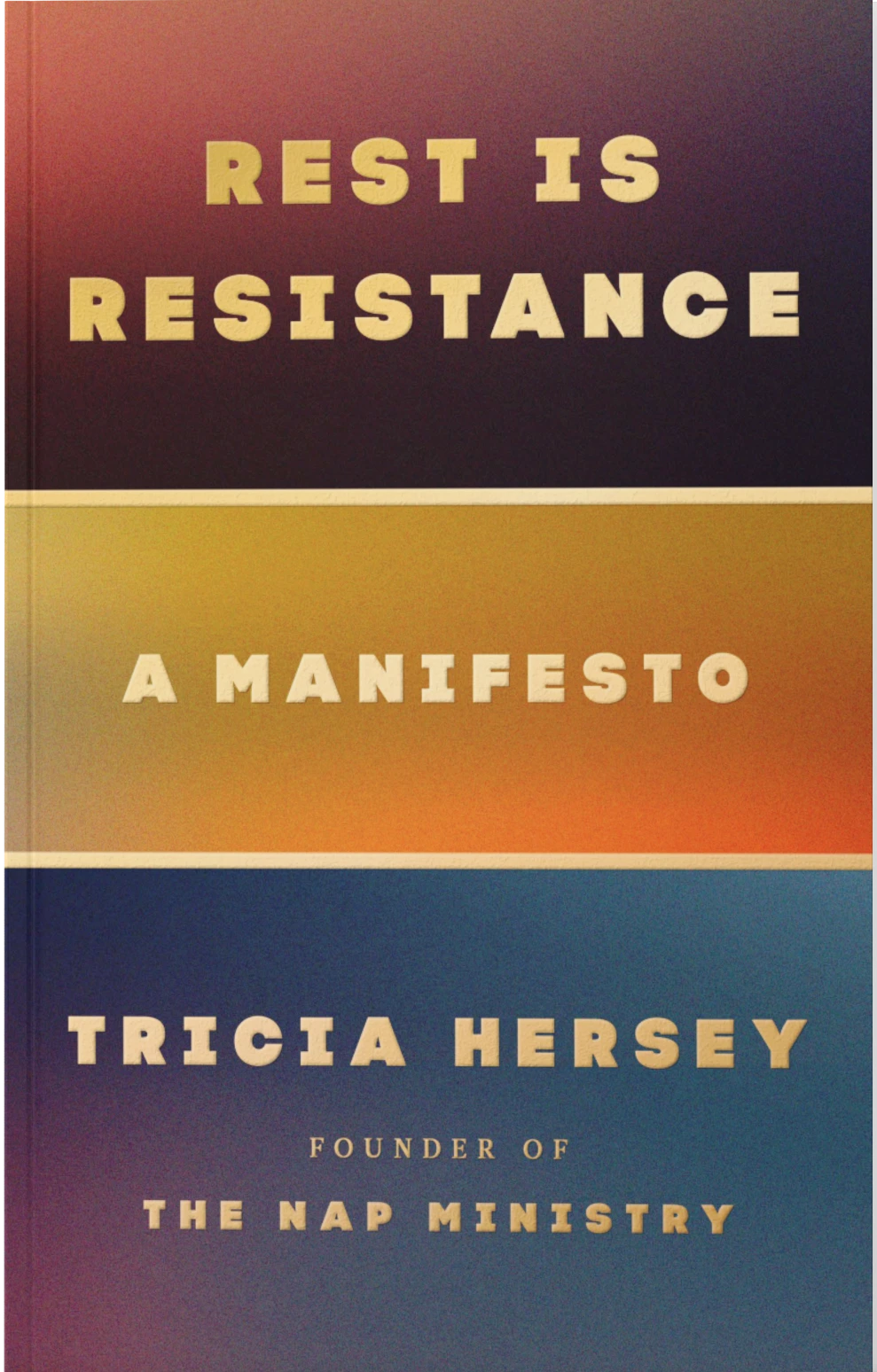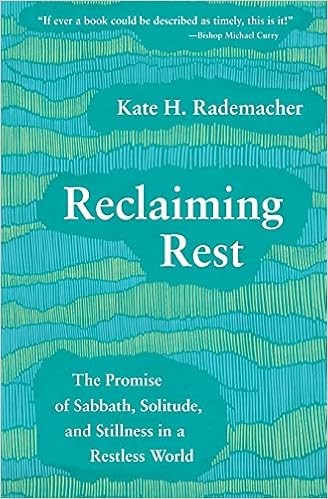Rest is important for good health. This is a nugget of wisdom that is widely held across the cultural and theological spectrum. If you work too hard, you’ll break down or burn out. Trust me, I know from experience.
The Hebrew Scripture, in Torah, records that God gave a word of law and promise (dabar) to the Israelites that they shall keep the Sabbath (shabbat) Day set apart. The Hebrew word shabbat simply means to cease or rest. God said, “work hard for six days, then set aside the seventh day to rest.” It’s that simple, and really wise.
In this post I want to visually explore what the text says about why God spoke this word to the people, how they followed it, misunderstood it, abused it, and how Jesus had to recalibrate it. I will end by offering some resources on how to practice Sabbath today.
Table of Contents for this post:
Comparing Exodus and Deuteronomy
The image below offers a comparison between the two versions of the Sabbath law, the first in Exodus, the second in Deuteronomy.

The image below is the visual outline of a sermon I gave on the spiritual practice of rest back in 2017.

The Great Irony of the Sabbath
Here is the great irony of what happened to the Sabbath Law. The Hebrew people abused it in two ways.
First, they didn’t follow it completely. They often forgot the EVERYONE and EVERYTHING component. They abused their slaves and the foreigners among them time and again. They also didn’t let the land rest. They never observed the seventh year of rest and the year of Jubilee. Many Bible scholars draw a connection between the 70 years of Exile in Babylon and the number of years that the Israelites neglected the land rest. I’m not sure if it is true, but it is interesting.
Second, they turned the Sabbath Law into a legalistic code that was less about actually bringing life and health to all people and more about creating a hard culturally distinctive boundary between “pure Jews” and “those other people.” The sabbath was one of the “works of the Law” along with circumcision and dietary rules that kept the right people “in” and the wrong people “out.”

Jesus and the Sabbath
Enter Jesus.
One of the many things that really frustrated Jesus was the hypocrisy of the religious leaders around their misuse of the Sabbath Law. The images below are pages from A Cartoonist’s Guide to Gospels. Notice how Jesus treats the Sabbath in light of the religious leaders’ abuse of it.
This image comes from page 8 in A Cartoonist’s Guide to Matthew.

This image comes from page 4 in A Cartoonist’s Guide to Mark.

This image comes from page 6 in A Cartoonist’s Guide to Luke.

This image comes from page 17 in A Cartoonist’s Guide to Luke.

This image comes from page 6 in A Cartoonist’s Guide to John.

What Now? Resources for Practicing Sabbath
I don’t want to overwhelm you, so I offer only two resources that you might find helpful to explore a life-giving approach to Sabbath Rest in a weary world.
from the website:
From the founder and creator of The Nap Ministry, Rest Is Resistance is a battle cry, a guidebook, a map for a movement, and a field guide for the weary and hopeful.
This book is rooted in spiritual energy and centered in Black liberation, womanism, somatics, and Afrofuturism. With captivating storytelling and practical advice, all delivered in Hersey’s lyrical voice and informed by her deep experience in theology, activism, and performance art, Rest Is Resistance is a call to action and manifesto for those who are sleep deprived, searching for justice, and longing to be liberated from the oppressive grip of Grind Culture.
from the description on Amazon:
Public health expert Kate H. Rademacher grew up thinking it was up to humans to bring healing and justice to earth. Saving the world meant working long hours, answering emails day or night, and competing for professional awards and funding. In an era of pandemic, racial injustice, and deepening inequality, who’s got time for a nap?
Stressed out and frazzled, Rademacher landed on the Christian story, in which a sought-after Savior retreats to solitary places and prays alone in the wilderness. In the pages of Reclaiming Rest, Rademacher tells the story of a year of monthly Sabbath retreats, during which she withdraws from family and work obligations for periods of solitude. She also experiments with disciplines like walking, praying, taking a break from social media, and finding a Sabbath buddy. In lyrical and astute prose, Rademacher teases out answers to questions like: What does rest in a restless world look like? How is Sabbath connected to issues of justice? Vocation? Parenting? Simplicity?
Ultimately, Rademacher claims, Sabbath pierces our illusions of self-reliance and control, and that’s good news. What if keeping the Sabbath is not only a commandment to obey but a freedom to reclaim?
Dive In To More Spiritual Formation Resources
Explore Every Book of the Bible
Find cartoons, illustrations, videos, commentaries, and other helpful information about every book of the Bible.



